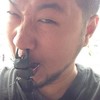Watch the new documentary Alone in the Zone, produced by VICE Japan for their YouTube channelInterview and photos by Ivan Kovac and Jeffrey Jousan
Article translated from the Japanese by Luke BakerToday marks the second anniversary of the earthquake that devastated Japan and caused one of the most serious nuclear disasters in world history, when the Fukushima Daiichi power plant started leaking radiation. The surrounding towns were evacuated in a rush, leaving empty homes, silent streets, and uncared-for animals. In the small town of Tomioka, however, less than six miles away from the Fukushima Daiichi plant, one man refused to leave: Naoto Matsumura, a 53-year-old fifth-generation rice farmer who is surely the most stubborn man in Japan, if not the world.
Advertisement

Advertisement
Advertisement

Advertisement




